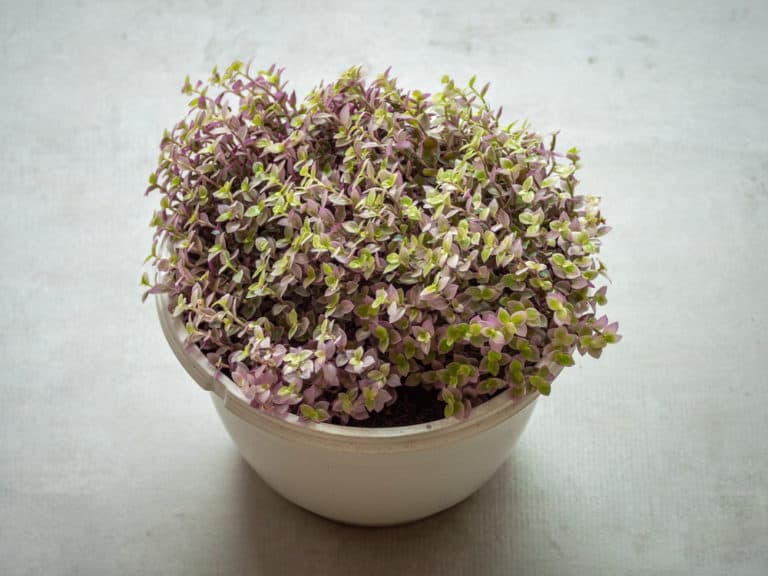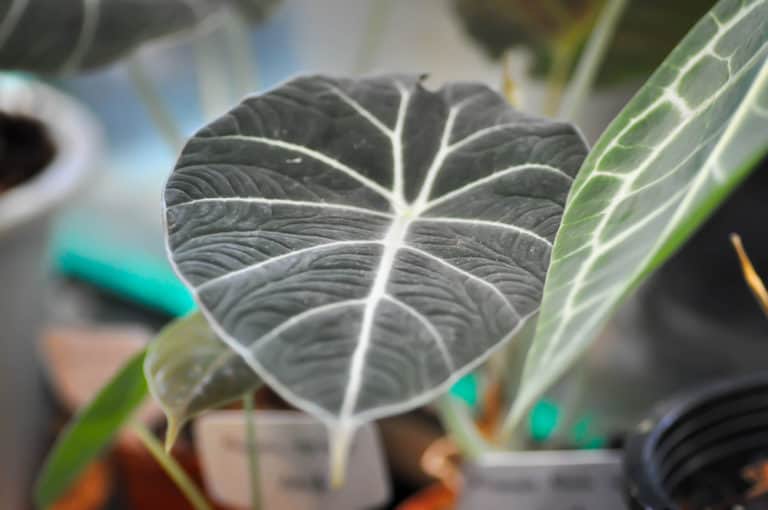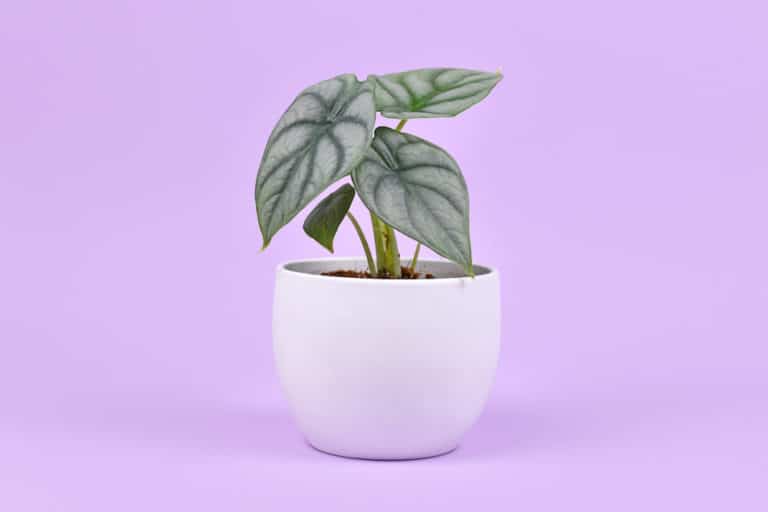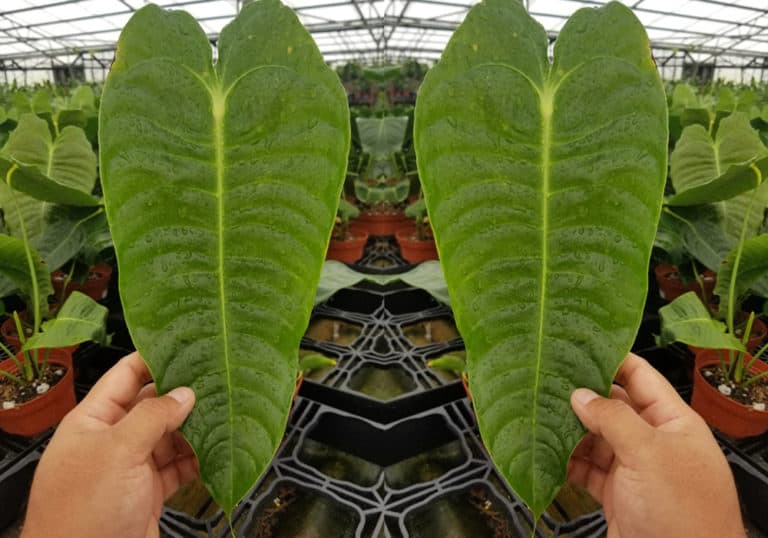Dracaena Fragrans ‘Lemon Lime’ Care Guide (2024)
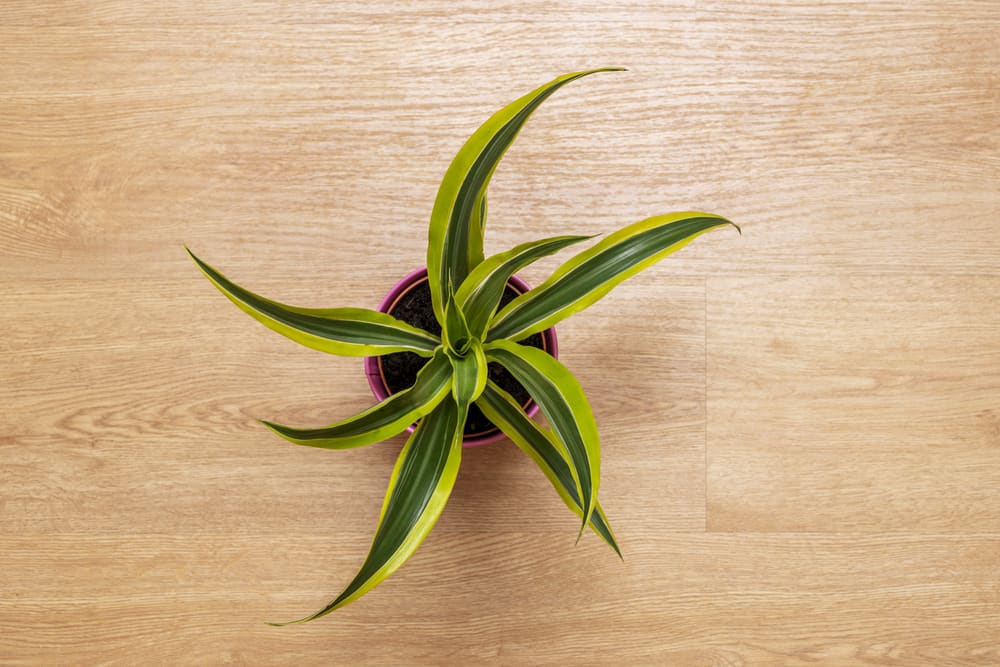
Lemon Lime Dracaena is a snazzy-looking plant that will add some zip to your indoor garden.
Dracaena fragrans Lemon Lime is prized for its leaves, boldly striped in dazzling shades ranging from yellow to chartreuse to dark green.
It is slow-growing, but at full size it will reach almost to your ceiling to create a gorgeous accent in your home.
| Scientific Name | Dracaena fragrans ‘Lemon Lime’ |
| Common Name | Lemon Lime Dracaena, Dragon Tree, Lemon Lime Warneckii |
| Light | Bright indirect sunlight |
| Watering | Weekly, water if top inch of soil is dry |
| Temperature | 70 to 75°F (21° to 24° C). |
| Hardiness Zone | 10 to 12 |
| Humidity | 50 % |
| Soil Type | Loose, quick-draining |
| Soil pH | 6.1 to 7.3 (Slightly acid to neutral) |
| Fertilizing | A balanced feed once a month in spring and summer |
| Repotting | Every 2 years |
| Pruning | Beginning of the growing season |
| Propagation | Root in soil or water |
| Toxicity | Toxic to humans and pets |
| Mature Size | 4 to 6 feet as a houseplant |
| Bloom Time | Rarely blooms indoors |
What’s Unique About Lemon Lime Dracaena?
Lemon Lime Dracaena plant is native to the tropical rainforests of Sub-Saharan Africa, including Sudan, Mozambique, Angola and Côte d’Ivoire.
However, it will adapt quite easily to life in your home or office.
Lemon Lime Dracaena plants have stunning foliage, with sword-shaped leaves striped in shades of green and yellow.
Growing Lemon Lime Dracaena is fairly easy once you’ve given it the basics that it needs to thrive.
In addition to its sharp good looks, Lemon Lime Dracaena is a useful addition to your home. It filters contaminants such as formaldehyde from the air to give you a healthier indoor environment.
Lemon Lime Dracaena Care
Lemon Lime Dracaena originates in the rainforests of tropical Africa.
For the best Lemon Lime Dracaena plant care, you should strive to give it a growing environment as close to its native habitat as possible.
Dracaena Lemon Lime care mostly consists of keeping it out of the full sun in a warm, humid spot.
Light
In its native rainforest, Lemon Lime Dracaena grows in the understory level, where the blazing tropical sun is filtered through the canopy.
In your home, Lemon Lime Dracaena light requirements are for bright but indirect light. That’s between 10,000 to 20,000 lux.
If it is in the full sun the brilliant colors will fade.
Lemon Lime plant light needs can easily be accommodated, no matter what direction your windows face.
It will be quite happy in a north or east window, but if you have a south or west exposure, find a spot several feet away from the window.
Watering
In the African rainforests, Lemon Lime Dracaena is used to consistently moist soil that does not hold a lot of water.
For Lemon Lime Dracaena watering in your home, your goal is to keep the soil moist throughout, but never have it sopping wet.
Water Lime Dracaena whenever the top inch of the soil is dry. Gently pour water onto the surface until it is moistened.
The best water for your Lemon Lime Dracaena’s watering needs is distilled or rainwater.
If your only option is tap water, let it sit overnight. This gives chemicals such as fluoride and chlorine to dissipate. Lemon Lime Dracaena is very sensitive to these chemicals.
Temperature
The African rainforest is a hot environment, and that is where Lemon Lime Dracaena evolved.
However, it does not need to be really warm. 70 to 75°F (21° to 24° C) is considered a good
Lemon Lime Dracaena temperature range.
This means that the average home can provide an acceptable temperature for Dracaena Lemon plant.
If you like to keep your house cooler than that in the winter, it will do okay as low as 60°F (16°C).
Do not test your Lemon Lime Dracaena’s temperature tolerance too far, though. A temperature of 53°F (12°C) for any length of time will harm the plant.
Lemon Lime Dracaena has no frost hardiness at all.
Humidity
The ideal humidity for Dracaena Lemon plant is 50% or more, as it is used to a high humidity level in the rainforests.
However, your Lemon Lime Dracaena will be able to survive quite well with a level as low as 40%.
You may not be able to meet those minimal Lemon Lime Dracaena humidity requirements in an indoor heated home.
While you can mist the leaves several times a week using distilled water, that can quickly become time-consuming.
A better idea is to purchase a small humidifier to keep the air moist around your Lemon Lime Dracaena. If you have other tropical plants, you can group them together so they all benefit from the extra humidity.
Soil
Lemon Lime Dracaena soil needs to be able to retain a moderate amount of moisture, while also letting excess water drain out. Your soil for Lemon Lime plant must never be sopping wet.
The range for the pH level for Lemon Lime plant is 6.1 to 7.3 , or slightly acid to neutral.
The soil mix for Lemon Lime Dracaena should be rich with organic material, while at the same time being porous and loose.
You can use a standard potting soil with an equal amount of peat moss, or mix together equal parts of well-rotted compost and peat moss.
Avoid perlite as it contains fluoride.
Fertilizer
You will want to use fertilizer for Lime Dracaena to encourage the healthiest growth and most brilliant colors.
Use a standard indoor plant fertilizer with a balanced fertilizer ratio of 10-10-10.
You have two main options for Lemon Lime Dracaena fertilizer.
You can add slow-release granules to the soil a few times during the growing season.
Otherwise, use a liquid plant fertilizer. Dilute it to half the recommended strength and apply to the top of the soil once a month, right after watering.
Salts from the fertilizer may build up in the soil. Once every three months, flush the soil by running water through it for 10 minutes. Let the excess drain out completely.
Potting & Repotting
As your Lemon Lime Dracaena continues to grow it will need to be repotted to give the roots room to spread.
Lemon Lime Dracaena repotting should be done roughly every 2 years.
However, if you see roots growing out of the drainage holes before then, it’s time for repotting Lemon Lime plant.
Potting should be done in the spring at the beginning of its growing season.
Only go up one pot size, or at most 2 inches in diameter. Any more than that can actually set back your Lemon Lime Dracaena’s growth.
Always use fresh potting mix when you repot.
Pruning
Lemon Lime Dracaena pruning is necessary to shape the plant as it grows and to encourage new lateral growth.
Cutting Lemon Lime plant should be done in spring at the beginning of the growing season.
As always, removing dead or yellowing leaves should be done as they occur. The oldest leaves at the base are usually the first to go.
This will start to reveal the stem, creating the appearance of a small tree. If you want to keep the bushy look instead, you can cut off the stem at any point. New lateral stems should develop.
You can also trim off browning tips on the leaves with sharp scissors.
Propagation
Lemon Lime Dracaena propagation is simple to do with stem cuttings.
To propagate Lemon Lime plant, one option is to take young, green stems. Remove the bottom leaves until you have at least 2 inches of bare stem, with leaves still at the top.
Leave the stem in a warm, dry place for a couple of days until the base develops a callus. Then put it in water or a growing medium.
Keep it warm and humid, and after a couple of weeks you should have a newly rooted plant..
You can also cut off the growing tip at the top of the Lemon Lime Dracaena, and plant it directly in soil. It should quickly take root.
Common Problems of Lemon Lime Dracaena
No houseplant is completely foolproof, but there are few Lemon Lime Dracaena problems that can’t be prevented or solved with proper growing conditions.
Regular inspection of the leaves will alert you to most problems with Lemon Lime plant.
Then, it’s just a matter of diagnosing the problem and applying the correct solution.
Pests
Common Lemon Lime Dracaena pests include spider mites and mealybugs.
The best way to prevent bugs on your Lemon Lime plant is to use a solution of insecticidal soap or neem oil when you wipe down the leaves every month or so.
Spider mites will leave little white or yellow dots on the tops of the leaves as they suck sap. In advanced infestations you may also find sticky webs.
Take your Lemon Lime Dracaena to the shower or sink and use a handheld nozzle to rinse the foliage down thoroughly to remove them.
Mealybugs look like little tufts of cotton on the underside of the leaves. Wipe them off with rubbing alcohol.
Diseases
Most Lemon Lime Dracaena diseases are caused by poor watering habits of one sort or another. You should be able to save your Lemon Lime plant if it is affected by any of them.
If the leaves of your Lemon Lime Dracaena are turning yellow or brown, you may have a case of fluoride toxicity. These plants are very sensitive to fluoride. Flush the soil thoroughly and use distilled or rainwater in future.
The other main disease that affects Lemon Lime Dracaena is root rot, caused by consistently wet soil. Leaves start yellowing and stems become mushy. If you remove the root ball from its pot you will see black roots.
Cut out all affected parts and replant in fresh, well-draining soil.
Growing Problems
Lemon Lime Dracaena growing problems can usually be solved by providing your sick plant with its preferred growing conditions.
If your plant has pale leaves or brown spots, it is getting too much sun. Move it out of the direct light.
If new leaves are small and faded, it isn’t getting enough light. Find a brighter spot for it.
If leaves are drooping, it may need watering. Give the pot a thorough soaking to revive your Lemon Lime Dracaena.
Low humidity can cause brown leaf tips on your Lemon Lime Dracaena. Use a humidifier to increase humidity, or start misting it daily.
Toxicity of Lemon Lime Dracaena
The Lemon Lime plant poses some risks for both humans and animals, although on the whole it is more toxic to your pets.
Its toxicity is caused by the saponin in the leaves. While small quantities of saponin can be found in foods such as spinach and oats, large doses can cause serious reactions.
For Humans
Lemon Lime Dracaena is considered mildly toxic to humans.
While there is little risk of a serious reaction to the saponin in the leaves, children should be discouraged from handling any part of the plant.
A child is unlikely to try more than a very small bite, because the taste is unpleasant. However, if they develop a swollen tongue or have difficulty breathing, take them for emergency care.
People with sensitive skin may develop a rash if the sap gets on their skin. Always wear gloves when working with your Lemon Lime Dracaena, and rinse off any on your skin with soap and water.
For Pets
Lemon Lime Dracaena can be a real danger for pets.
Cats and dogs can both have a very serious reaction to ingesting the foliage.
Look for drooling, vomiting and diarrhea, especially if you see blood. It can cause death if not treated, so take your pet to the veterinarian immediately.
Find a spot for your Lemon Lime Dracaena away from pets and children alike.
When your plant is small, it can be set on a high shelf or table out of reach. When it starts to reach its full height, however, it will need to be at or near floor level.
You should consider pruning it to keep it small while still being able to enjoy the foliage.
Lemon Lime Dracaena Appearance
The Lemon Lime Dracaena appearance is fresh and exciting.
The brightly striped green and yellow leaves will brighten up any space.
As well, its eventual large height will make it a focal point of your indoor garden.
While you are unlikely to see it bloom when grown indoors, its foliage is gorgeous enough to make up for that.
Foliage
The foliage of Lemon Lime Dracaena will not fail to catch the eye with its brilliant colors.
Each leaf is sword-shaped, with a smooth texture. Leaves can grow to 2 feet or more in length and 3 inches wide.
They are stiff, growing upright and arching out gracefully.
They have stripes ranging from bright yellow at the edges to dark green in the center.
Since Lemon Lime Dracaena is an evergreen tropical plant, the leaves remain year-round.
You should wipe them down with a damp cloth periodically to remove dust and dirt that may build up on the long-lasting leaves.
Flowering
Lemon Lime Dracaena flowering is possible but not very likely on an indoor plant.
A Lemon Lime Dracaena is much more likely to flower when grown outdoors in a tropical region, where it can be planted in the ground.
If it does flower, blooming can occur throughout the year.
Keeping the plant out of direct sun will encourage flowering.
Stiff stalks emerge from the center of the plant, bearing many clusters of tiny white flowers. Red berries may follow after blooming. They are poisonous, as they contain saponin.
However, most indoor growers will not miss the Lemon Lime Dracaena flowers, as the bright foliage creates a beautiful picture all on its own.
Size and Growth
The size of Lemon Lime Dracaena depends on whether it is grown indoors or outdoors and how much it is pruned.
Lemon Lime Dracaena has a slow growth rate, averaging about 6 inches a year as it grows to its usual indoor height of about 6 feet with a spread of up to 3 feet.
Outdoors, a mature Lemon Lime Dracaena can be as tall as 20 feet, taking the form of a tree as the lower leaves die off, exposing the trunk.
Indoors, it can be pruned to remain small enough to remain on a table or shelf indefinitely.
Lemon Lime Dracaena Fragrance
If you are lucky enough to see your Lemon Lime flower, you will experience its scent.
The Lemon Lime Dracaena fragrance is pleasant but only occurs when it is blooming.
Otherwise, the foliage has no fragrance at all.
On the other hand, Lemon Lime Dracaena is one of the best plants for filtering contaminants from the indoors.
In NASA studies it was found to remove formaldehyde, toluene, and xylene from the air, creating a healthier environment.
For someone who is especially sensitive not just to fragrance but also to airborne chemicals, growing a Lemon Lime Dracaena is a great idea.
Suggested Uses for Lemon Lime Dracaena
Not only beautiful but practical, Lemon Lime Dracaena can be used to beautify your home as it detoxifies the air.
When growing it indoors as a potted plant, you can keep it at a suitable size for even a small city apartment. It’s perfect as an accent plant alone or as part of a larger tropical garden.
If you have a balcony or patio that you like to spend time on in summer, a Lemon Lime Dracaena can add a welcome bright tropical note.
In a tropical climate, you can plant Lemon Lime Dracaena in the ground and watch it grow into a small tree as it matures.
FAQ
What is Lemon Lime Dracaena?
Lemon Lime Dracaena is a tropical evergreen plant native to the rainforests of Sub-Saharan Africa. It can be grown as a compact bush or allowed to grow into a tree.
How to identify Lemon Lime Dracaena?
Lemon Lime Dracaena has 2 foot long sword-shaped leaves with stripes of yellow and green running their length. It forms a clump before stretching up to a small tree.
How to care for Lemon Lime Dracaena?
Lemon Lime Dracaena should be grown in well-draining but consistently moist soil, and kept in a warm, moderately humid environment in bright but indirect light.
How to grow Lemon Lime Dracaena indoors?
Plant Lemon Lime Dracaena in loose, well-draining soil. Keep it out of full sun and water whenever the soil surface dries out. Feed it monthly.
How to grow Lemon Lime Dracaena outdoors?
Lemon Lime Dracaena can be grown outdoors year-round in a tropical region. Plant it in a shady location in rich, well-draining soil that is consistently moist.
How fast does Lemon Lime Dracaena grow?
Lemon Lime Dracaena has a slow growth rate, growing about 6 inches a year to a height of 4 to 6 feet when grown indoors.
How tall does Lemon Lime Dracaena grow?
Lemon Lime Dracaena can reach 6 feet or so when grown indoors as a houseplant and 20 feet when grown outdoors in a tropical region.
How to make Lemon Lime Dracaena grow faster?
Lemon Lime Dracaena will grow its fastest when given ideal growing conditions including warm temperatures, moderate to high humidity, consistently damp soil, and regular feeding.
How to stake Lemon Lime Dracaena?
Lemon Lime Dracaena does not require any staking. However, you should give the pot a quarter turn a week to keep the plant from leaning in the direction of the light.
How to pot Lemon Lime Dracaena?
Lemon Lime Dracaena should be potted in loose, well-draining soil that retains moisture. It can be planted in a plastic or glazed pot to keep the soil from drying out.
How to revive Lemon Lime Dracaena?
If your Lemon Lime Dracaena has become stressed, you can revive it by holding it at 60°F (15°C) and 50% humidity for 2 or 3 weeks.
Why is my Lemon Lime Dracaena dying?
Your Lemon Lime Dracaena may have contracted a disease as a result of poor watering habits. Never let the soil stay soaked, and use distilled water.
Why is my Lemon Lime Dracaena drooping?
Your Lemon Lime Dracaena may be drooping because it needs to be watered. Give the soil a good soaking and let all excess water drain away.
How cold can Lemon Lime Dracaena tolerate?
Lemon Lime Dracaena should not be kept at a temperature below 53°F (12°C) as it can damage the plant. Freezing temperatures will kill it completely.
How to get rid of pests on Lemon Lime Dracaena?
Lemon Lime Dracaena pests can be removed or prevented by regularly wiping down the leaves with insecticidal soap or neem oil, or by washing the plant down in the shower.
Is Lemon Lime Dracaena toxic to cats?
Yes, Lemon Lime Dracaena is toxic to cats. If your cat starts experiencing vomiting (especially with blood) or diarrhea, take it in for immediate care.
Is Lemon Lime Dracaena toxic to dogs?
Yes, Lemon Lime Dracaena is toxic to dogs. If your dog starts vomiting or has diarrhea, it needs immediate medical attention as this can be fatal.
Is Lemon Lime Dracaena toxic to children?
Yes, Lemon Lime Dracaena is mildly toxic to children. If they have a swollen tongue or difficulty breathing, take them to the emergency room immediately.
Is Lemon Lime Dracaena toxic to humans?
Yes, Lemon Lime Dracaena is mildly toxic to humans. Exposure to the sap can cause a rash in sensitive individuals. Rinse it off your skin with soap and water.
Does Lemon Lime Dracaena have a scent?
The Lemon Lime Dracaena flowers have a pleasant scent, but they rarely bloom on plants grown indoors. The evergreen foliage has no fragrance at all.


